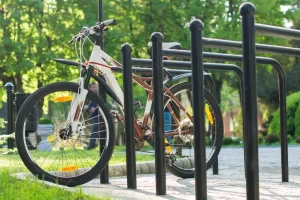These are the top home gym flooring options to help you choose the right one for your space.
A home gym can be a great way of maintaining your health and fitness. Creating the perfect home gym requires that you have home gym flooring that supports your exercise and workout needs.
What floor is best for a home gym?
It all depends on the type of exercise equipment you use and the surface it is placed on. Men’s Heat states that gym flooring must be durable, have adequate traction, and have impact shock absorbtion.
You run the risk that you slip, injure yourself, or cause chronic joint pain. This buyer’s guide can help you determine the best flooring for your home gym.You can check more at gym-flooring.com
Rubber flooring
Rubber is the best choice for home gym flooring. It can be used to cover any surface, even hard concrete floors. Because rubber is durable and absorbs shock, it’s popular for home gym flooring.
Amazon has a variety of rubber flooring options, including mats and rolls. American Floor Mats offers 4 x 6 foot rubber rolls starting at $100 RevTime’s 8 foot x 6 foot rubber floor mat is available for $150. IncStores interlocking rubber tiles are available in 23-inch x 23,-inch sizes. They cost $70 for four tiles.
Foam flooring
Foam flooring for your home gym is similar to having exercise mats all over the floor. Foam floor tiles are lightweight and easy to install. These tiles are ideal for yoga and Pilates. Foam is cheaper than rubber at $1-$4 per square foot but it’s also less durable. Foam is not recommended for use with heavy equipment or intense workouts, nor to be placed on hard surfaces such as concrete.
Amazon offers many options, including colored foam tiles, wood-like foam tiles and rubber-topped foam tiles for added durability.
Vinyl Flooring
Vinyl flooring can also be used as flooring in a home gym. It is water-resistant, easy to clean and blends well into your home. Rubber Flooring Inc. recommends vinyl flooring for basement or garage gyms.
Vinyl is a great choice for your garage or basement gym flooring because it’s moisture, mold and mildew resistant. Vinyl is also very durable and can withstand the weight of heavy gym equipment. Vinyl is not the best for shock absorption.
Vinyl mats can be placed under heavy equipment such as a treadmill, Amazon sells them. This GOPLUS PVC Vinyl Mat is 6 1/2 feet x 3 feet in size and costs less that $40. If you need more coverage, you can get a 40-pack 6-inch by 36-inch self adhesive vinyl floor planks from Achim Home Furnishings at a cost of around $70. You can also buy 12″ x 12″ self-adhesive vinyl flooring tiles. These tiles look just like wood and are $11 per 20 vinyl tiles.
Carpet
Carpet is also very popular as a flooring option for your home gym. For easy DIY installation, you can either have wall-to-wall flooring installed, or you can use tiles to install your carpet. For good traction and stability, make sure to choose a low-grade commercial-grade pile.
Carpet will blend seamlessly with your decor. It can also support the weight of your equipment. Carpet can trap moisture and sweat, so carpet has low shock absorption. However, carpet pads may be able to help. Anti-fatigue carpet tiles have a higher shock absorption. 20 packs of heavy-duty, self-adhesive Nispora 20-inch x-20-inch carpet tiles are available for $70.
Cork Flooring
Cork flooring provides high shock absorption and support during intense workouts. Cork flooring is also eco-friendly and resistant to mold, mildew, fire, and mites. This, along with the fact that cork can fade in direct sunlight makes floating cork floors a great choice for home gyms located in basement or garages.
You can double up on glue-down cork tiles to make your flooring support heavy machinery and weights. Or, you could choose another style of flooring.
These cork flooring plansks are a fine option. They cost $3.50 per square feet.





